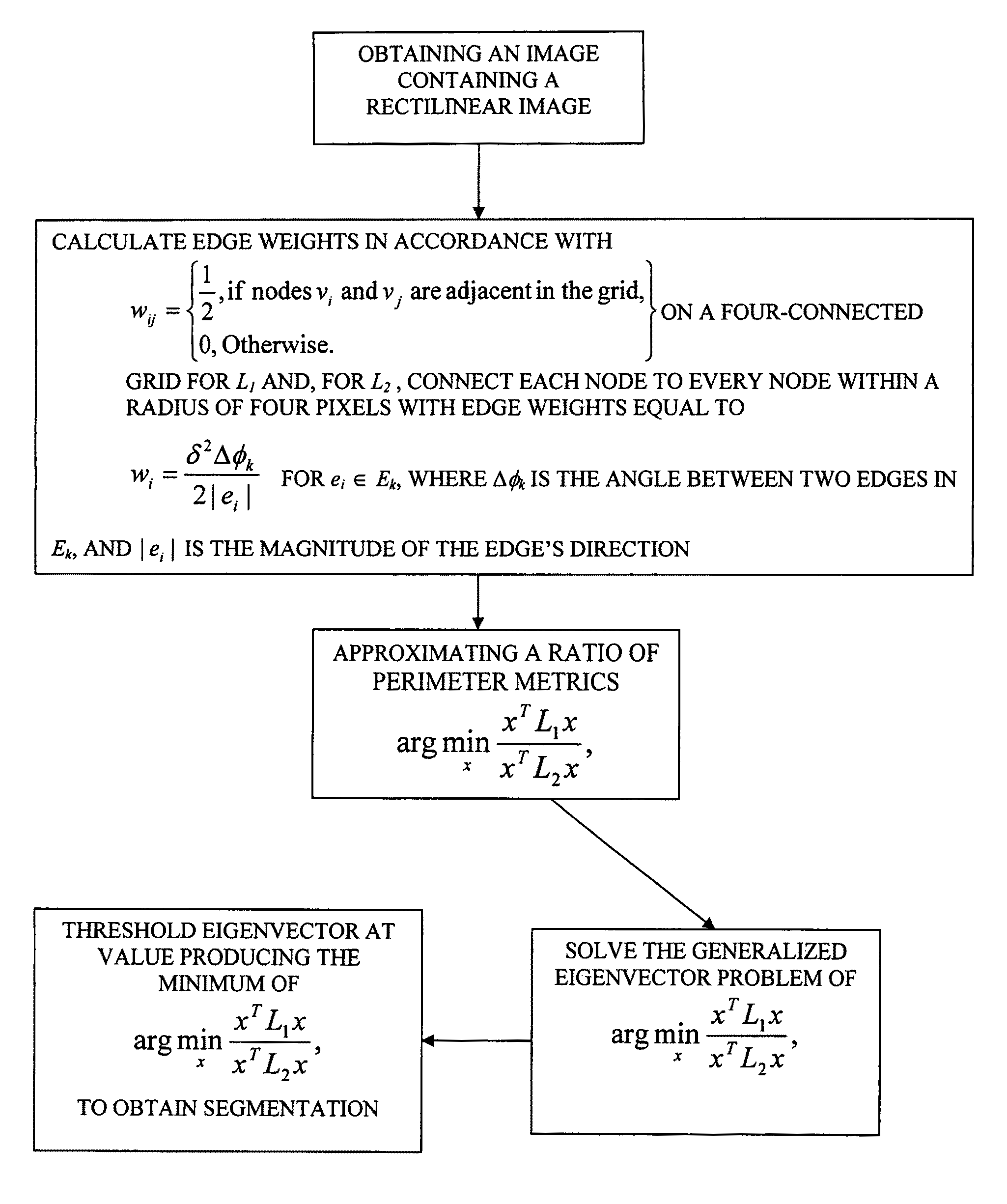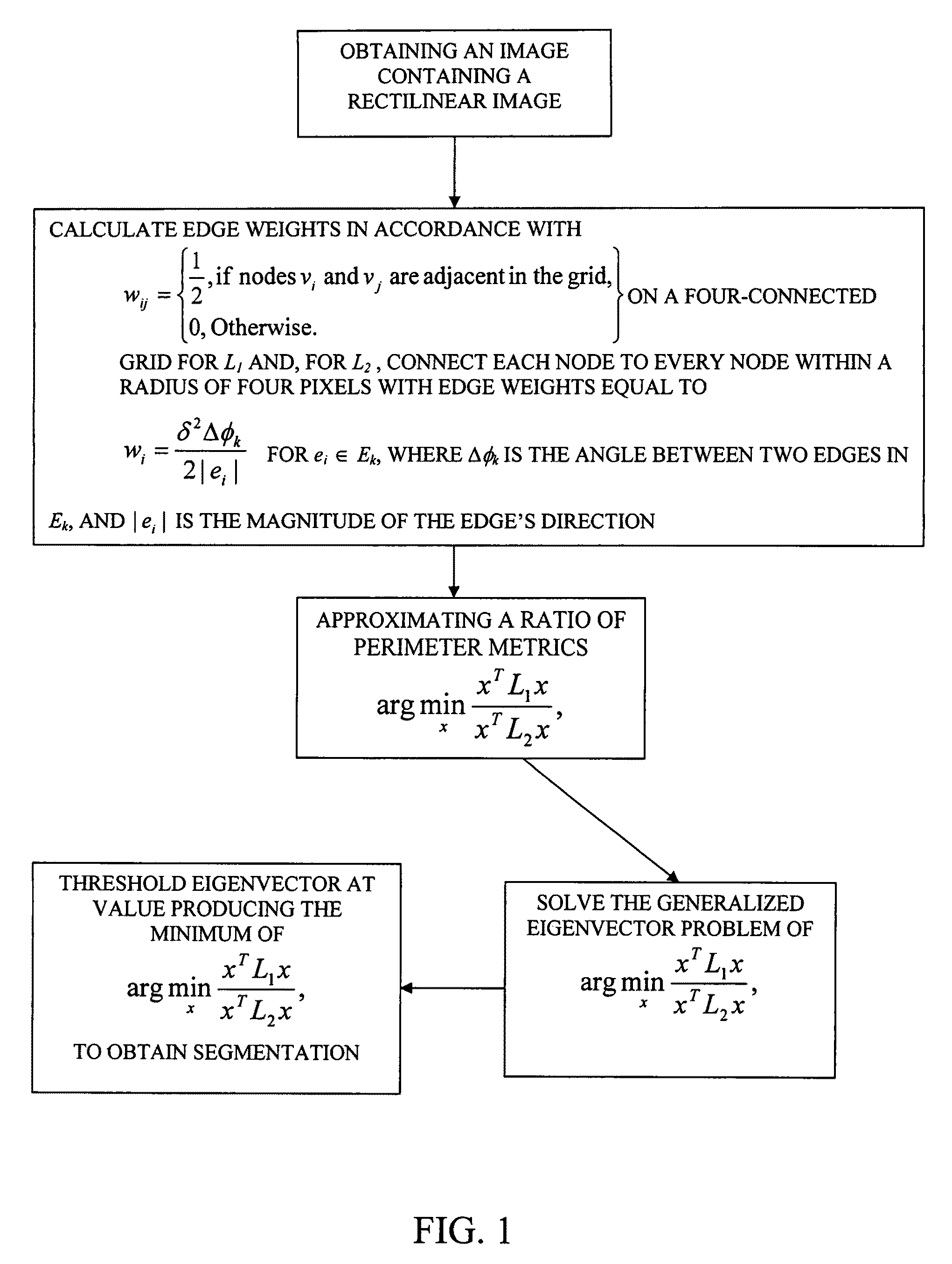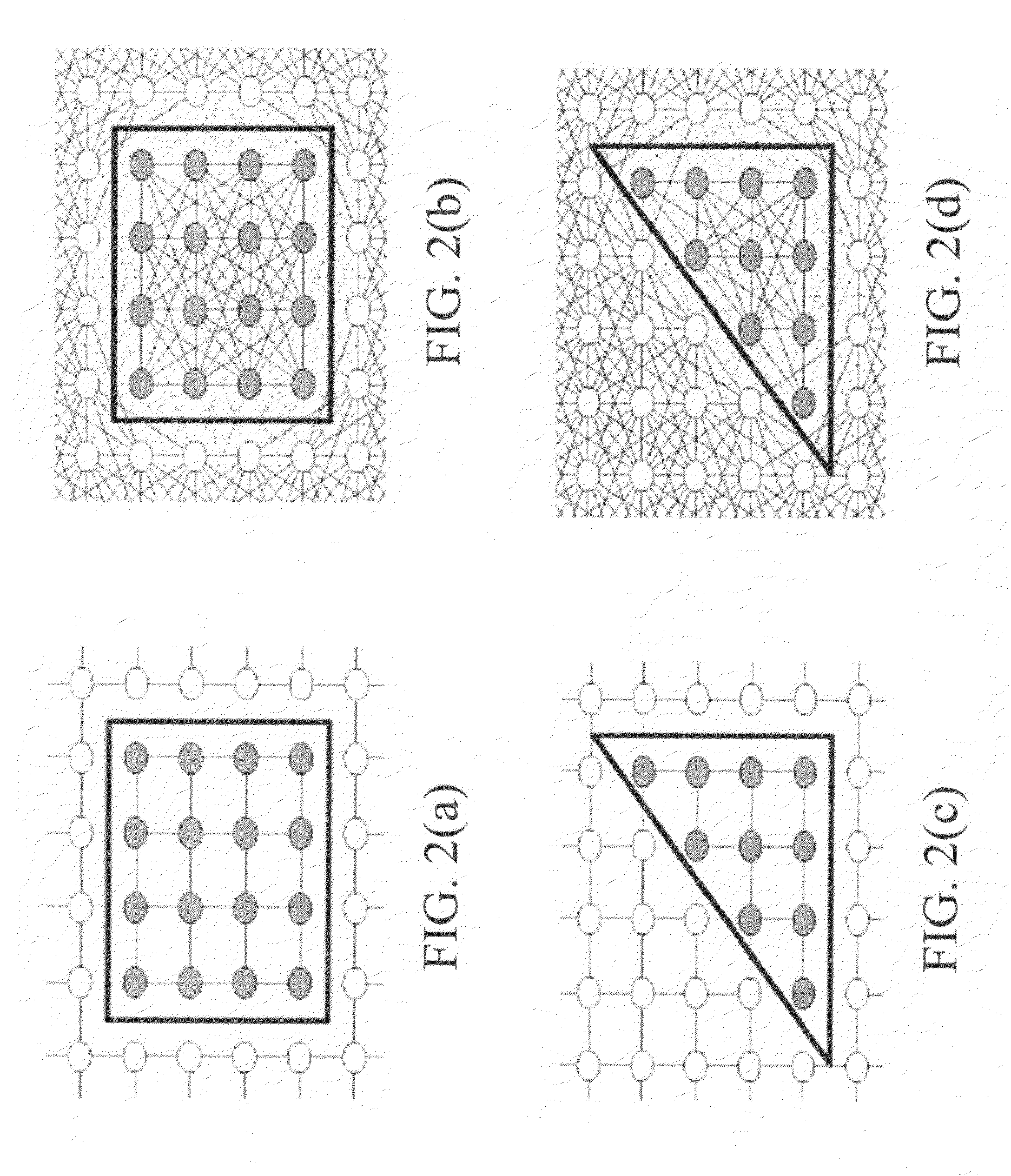Globally optimal uninitialized graph-based rectilinear shape segmentation
a graph and rectilinear shape technology, applied in image analysis, image enhancement, instruments, etc., can solve the problems of global optimality, algorithm that does not provide global optimality, and global optimal solution
- Summary
- Abstract
- Description
- Claims
- Application Information
AI Technical Summary
Benefits of technology
Problems solved by technology
Method used
Image
Examples
example
[0059]Weak or Missing Boundaries—Real images almost always contain some weak boundaries due to poor contrast, noise, blurring artifacts or occlusion. Therefore, the OM algorithm was tested to see how well it will find objects of the appropriate shape, even in these difficult realistic circumstances. Two experiments were conducted to see how well the OM algorithm will produce the correct segmentations under these conditions. FIGS. 5(a)-5(c) illustrate the first experiment in which the OM algorithm is applied to the classic weak-boundary rectilinear shape—the Kanizsa square. FIG. 5(a) shows the original image of a Kanizsa square. FIG. 5(b) shows the minimum generalized eigenvector. FIG. 5(c) shows the shaded square shape that was segmented by the OM algorithm demonstrating that the OM algorithm will correctly segment and identify the square shape. The second experiment is shown in reference to FIGS. 6(a)-6(c) in which the OM algorithm was applied to a shape formed by joining a square ...
PUM
 Login to View More
Login to View More Abstract
Description
Claims
Application Information
 Login to View More
Login to View More - R&D
- Intellectual Property
- Life Sciences
- Materials
- Tech Scout
- Unparalleled Data Quality
- Higher Quality Content
- 60% Fewer Hallucinations
Browse by: Latest US Patents, China's latest patents, Technical Efficacy Thesaurus, Application Domain, Technology Topic, Popular Technical Reports.
© 2025 PatSnap. All rights reserved.Legal|Privacy policy|Modern Slavery Act Transparency Statement|Sitemap|About US| Contact US: help@patsnap.com



